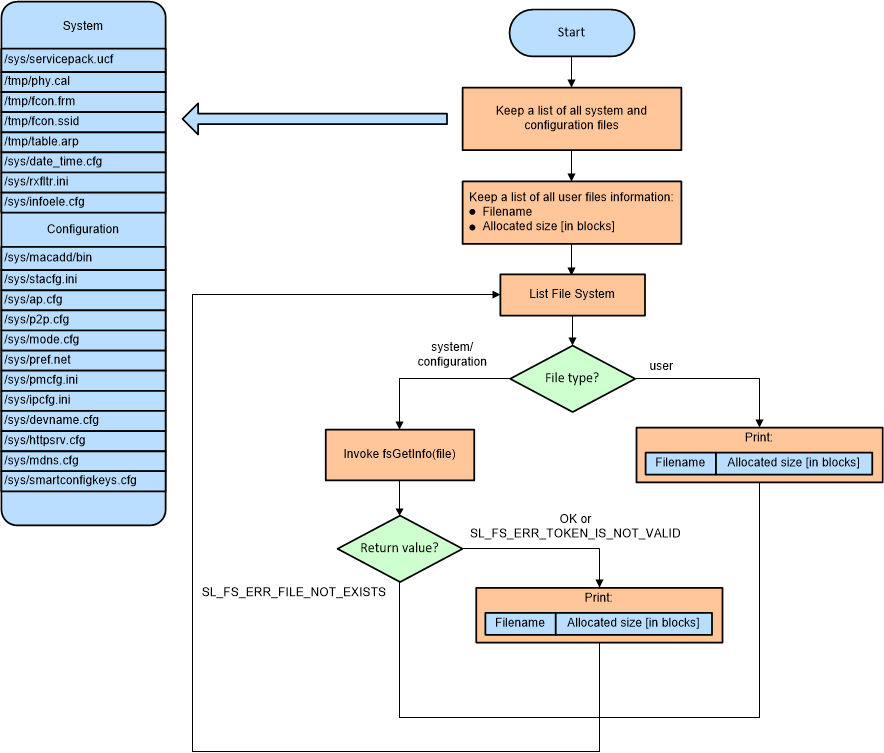SWRA657 June 2020 CC3100 , CC3200
-
SimpleLink Wi-Fi CC3100, CC3200 Serial Flash
- Trademarks
- 1 Introduction
- 2 How File System Content Gets to the Serial Flash
- 3 File System Guidelines
- 4 User File Mathematics
- 5 System and Configuration Files
- 6 Implementing File System Features From Host Processor
- 7 Factors to Consider in Designing With Serial Flash
- 8 Design Recommendations for Ensuring the Integrity of the Power Supply to the Serial Flash
- 9 Recommended Best Practices
- 10 Implications of Data Integrity Compromise to CC3100/CC3200
- 11 References
6.2.2 Procedure
The procedure for listing the files and their respective allocated space is as follows:
- Keep the following information for every user file created:
- Filename
- Calculate file size according to Section 4.
- Loop over all user files and print:
- Filename
- Calculated size
- Loop over all system/configuration files, invoke fsGetInfo() API and conclude:
- If return value is SL_FS_ERR_FILE_NOT_EXISTS, file does not exist and thus should not be printed. Else, the file exists and should be printed along with the allocated size
- If return value is SL_FS_ERR_TOKEN_IS_NOT_VALID, it means the file is secured but exists. This return value applies to the following three files:
- /tmp/fcon.frm
- /sys/pref.net
- /sys/smartconfigkeys.cfg
In this case, the file exists and should be printed along with the allocated size.
Figure 2 illustrates the procedure.
 Figure 2. File Listing Flow
Figure 2. File Listing Flow